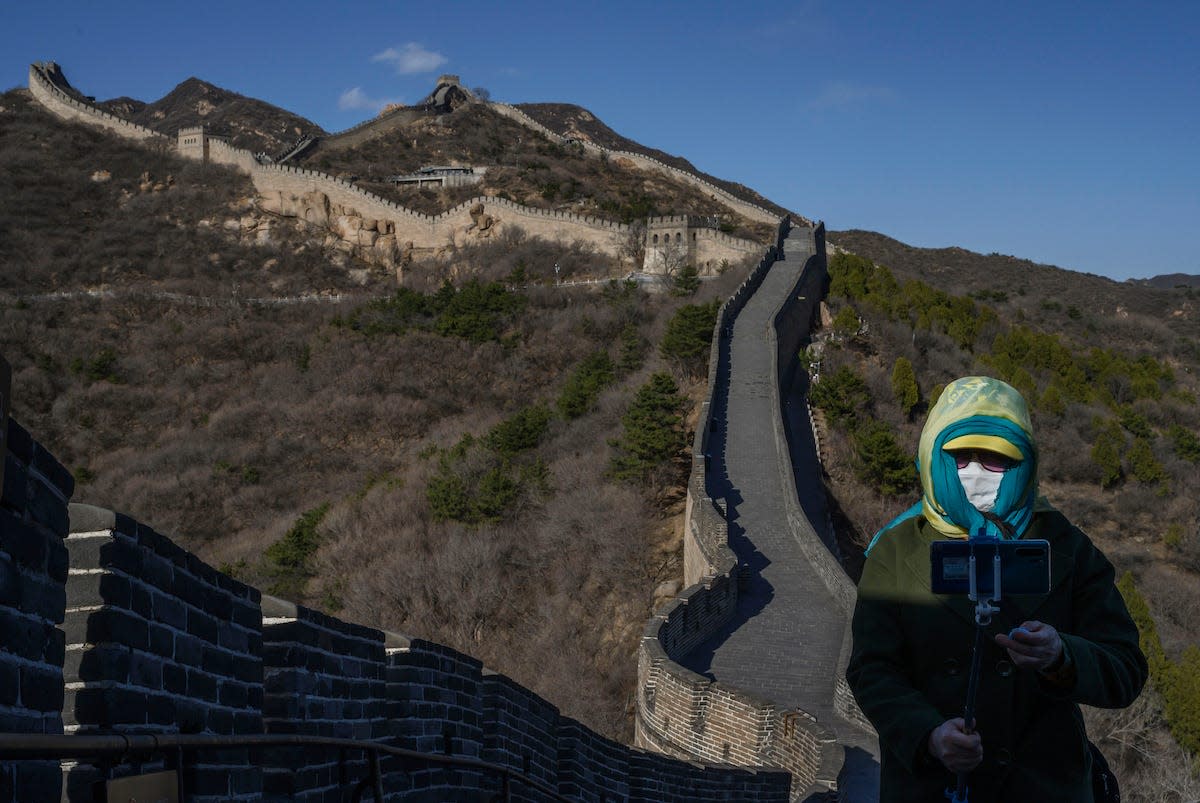Two people have been accused of using an excavator to destroy part of the Great Wall of China to create a shortcut

Two people have been accused of destroying part of the Great Wall of China with an excavator.
The Chinese government detained the pair, CNN reported.
It's the latest example of damage to a historical site after a tourist defaced Rome's Colosseum.
The Chinese government is reportedly detaining two people who have been accused of using an excavator to destroy part of the Great Wall of China.
Police in the country detained a 38-year-old man and a 55-year-old woman after receiving a report in late August that someone had created a gap in one of China's most famous historical structures, CNN reported Monday, citing CCTV, the Chinese state broadcaster.
The pair wanted to create a path cutting through the Ming-dynasty portion of the wall as a shortcut, CNN reported. The damage has affected the structural integrity of that portion of the Great Wall, and it was "beyond repair," state-owned newspaper China Daily reported.
The incident happened in the Shanxi province in Northeastern China, CNN reported.
The earliest segments of the Great Wall, which stretch for more than 4,000 miles across China, were first created in the third century BC. Later portions were added over the following centuries. The wall became a UNESCO World Heritage site in 1987.
The wall has faced numerous sources of destruction in recent years, from careless tourists to desertification and the climate crisis. A 2008 article in Smithsonian Magazine cited experts who claimed up to two-thirds of the wall were either destroyed or damaged at the time.
The damage to the Great Wall is this summer's latest example of a world-historical landmark facing purposeful damage. In June, a tourist from the UK used a key to engrave his and his companion's names into a brick wall at Rome's Colosseum.
The Colosseum visitor later wrote an apology letter, saying that he wasn't aware of the age of the monument, construction of which began in the first century AD under the Roman emperor Vespasian.
Read the original article on Business Insider

